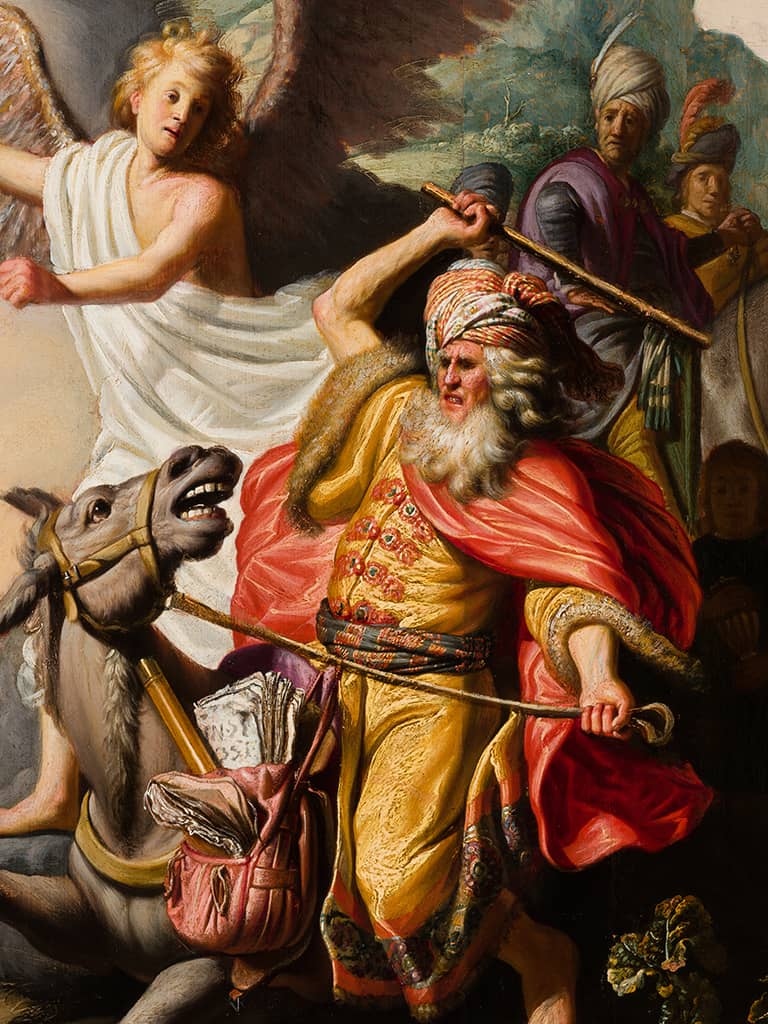








A miraculous talking donkey!
When the prophet Balaam's mount veers off the path to avoid an angel of God, he beats it with a stick. God himself intervenes by making the animal talk. The prophet, recognising a miracle, finally acknowledges the divine signs and blesses Israel three times.
Taken from the Old Testament, the episode relates how Balaam, on his way to curse the Hebrews, is intercepted by a divine message. On the back of his donkey, he is stopped by the appearance of an angel brandishing a sword.
This oil on wood, signed and dated 1626, is one of the earliest works by a young Rembrandt, at the age of just twenty. The Dutch master was aware of this rare but traditional subject for Dutch art in the 16th century thanks to the compositions of his master, Pieter Lastman.
The three main characters, almost superimposed on each other in an ascending spiral, are the centre of the scene's dramatic tension.
In the fabrics of the prophet's clothing and the satchel full of sheets of paper, we can already see the painter's distinctive treatment of the medium. Rembrandt associates the rendering of details with the thickness of the paint, a liquid paste that gives a granulated effect.
In the background, the two servants immersed in semi-darkness form a powerful luminous contrast, a precursor of the artist's future style. The protagonists, the chiaroscuro and the animated drapes contribute to the dramatic effect of this scene, which combines confrontation and revelation.
The turbaned heads with singular features and striking expressions that surround the central group evoke the master's "tronies". This work by Rembrandt, among the earliest known, is probably one of the oldest preserved in France.